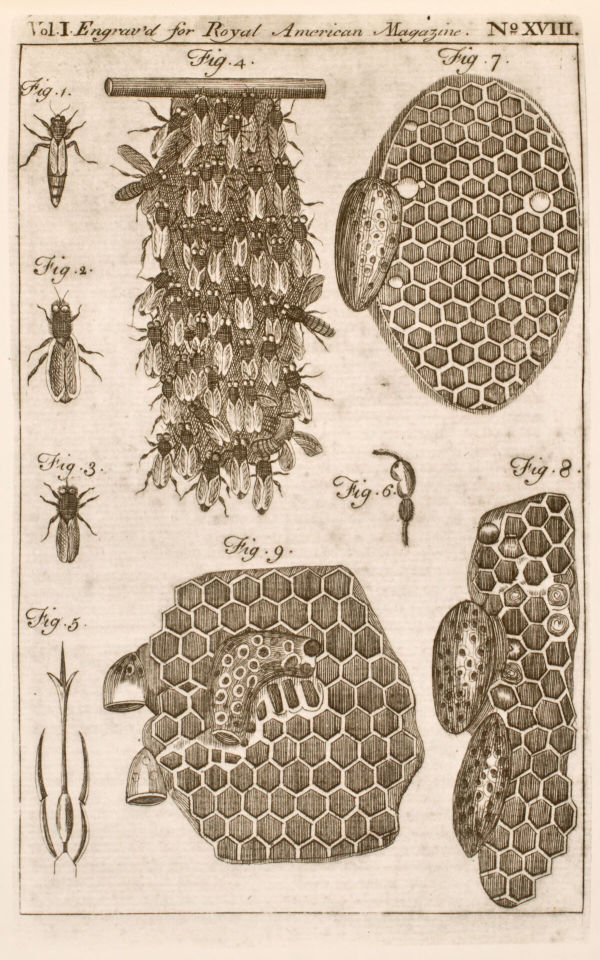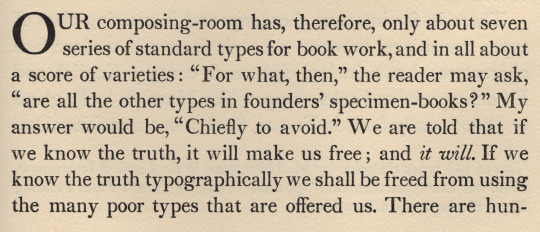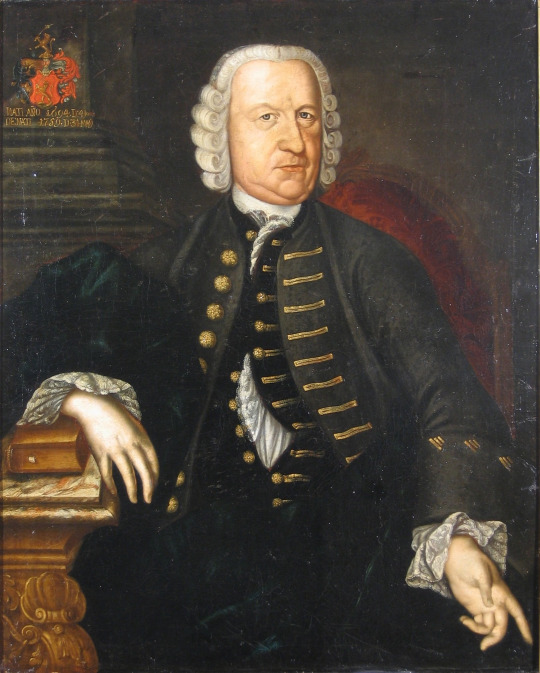#vol. xviii
Text

Admiral Archer's Prized Beagle*
*It's gotta be an institution right, they breed beagles and that's the name of their academy
#Star Trek#Star Trek Comics#IDW Comics#nuTrek#AOS Trek#Star Trek 2009#Star Trek Ongoing#Star Trek Ongoing vol 3#The Truth about Tribbles#Scotty#Beagle#Porthos#Porthos XVIII#(at a guess)
37 notes
·
View notes
Text
Jo, posant-me a llegir la història dels Països Catalans de Borja de Riquer: Va, diversifiquem una mica les nostres fonts d'infomació sobre el segle XIX
Borja de Riquer:

#PERDONA PERO COM ES QUE HAGI SORTIT????#VA FORA JA TINC PROU OPINIONS TEVES EN VULL D'ALTRES#ho llegia al tren com deu segons abans de la meva parada i vaig deixar de llegir i quedar amb cara d'astorat fins que vam arribar#no se com s'escriu si va amb e o a pero crec que es bastant igual perque de totes maneres era un pseudonim#i res que m'he posat a llegir-lo perque no tinc tan clar si existis un independentisme/catalanisme/sentiment nacional#tal com apareix al llibre#durant l'epoca de finals del s. xviii/principis del xix#no se si algu vol opinar#espereu un post mes ben fet al meu main si trobo una resposta :')#aubreyad
1 note
·
View note
Text

June is National Pollinators Month.
We humans owe so much to pollinators like bees and butterflies. They pollinate and help grow roughly 35% of the world’s food crops. Every month should be National Pollinators Month!
Bees [from Royal American Magazine, Vol. I, No. XVIII]
Revere, Paul, 1735-1818, American [artist]
Engraving
6 7/8 x 4 3/8"
American
1774
HOLLIS number: olvwork169866
This image is part of FAL’s Digital Images and Slides Collection (DISC), a collection of images digitized from secondary sources for use in teaching and learning. FAL does not own the original artworks represented in this collection, but you can find more information at HOLLIS Images.
#NationalPollinatorsMonth#Bees#Engraving#HarvardFineArtsLibrary#Harvard#HarvardLibrary#fineartslibrary
69 notes
·
View notes
Text
La Fayette aplogizing to a King for a change
Between purposefully insulting a King (Louis XVIII), completely ignoring the orders of another King (Louis XVI), being responsible for one Kings abdication (Charles X) and helping the next King on the throne, just to then call for his abdication (Louis Philippe I) La Fayette actually also knew to apologize to a King.
After returning to France for the first time, La Fayette was a bit in a pickle. Louis XVI had explicitly forbidden La Fayette from joining the American cause and he had famously ignored this order. While Louis XVI in the end was rather quick to forgive the young Marquis, in parts certainly due to his new popularity in France and abroad, some of the Kings ministers and advisors were of the opinion that some time in the Bastille might help La Fayette to learn his lesson. To smooth things over, La Fayette sat down and very carefully wrote a letter, explaining why he did what he had done and how sorry he was to have offended the King.
The Marquis de La Fayette to Louis XVI, February 19, 1779:



Sellers, John R. “Lafayette Papers at the Library of Congress.” The Quarterly Journal of the Library of Congress, vol. 29, no. 2, 1972, pp. 138–54. JSTOR, http://www.jstor.org/stable/29781505. Accessed 18 Feb. 2023.
The misfortune of having displeased Your Majesty produces such a deep sense of sorrow that I am encouraged not to try to excuse an action of which you disapprove but to present the real motives that inspired it. Love of my country, the desire to witness the humiliation of her enemies, a political instinct that the last treaty would seem to justify: these, Sire, are the reasons that governed the part I took in the American cause. When I received Your Majesty’s orders, I attributed them more to the solicitations and tender concern of my family than to the prescribed posture we were maintaining toward England. The feelings of my heart overcame my reason. I believed I saw that no one would disapprove of my departure as certainly as I saw the impossibility of its being permitted. If, in my disobedience, I used means that rendered me even more guilty, I risked, Sire, what every Frenchman ought to risk — his fortune, his hopes, and even public opinion — rather than harm the interests of his country by compromising the government through his conduct.
Persuaded that I was blameless, Sire, I fought for my country with a calm heart. I reveled in the pleasure of spilling my blood for her, and I allowed myself to do her homage through the small duties I performed for her allies. The First rumor of a war with England was recalling me to France at the very time that the arrival of Your Majesty’s fleet and the ever patriotic and enlightened opinion of the general who commanded it convined me that my remaining in America would be more useful. When I finally announced to Congress my intention to return, Your Majesty’s minister thought a leave of absence better suited to present circumstances.
I would not think, Sire, of daring to justify before Your Majesty an act of disobedience of which you disapprove and for which I should repent. Even less would I consider boasting of a few services so inferior to the reward that I received from the sheer pleasure of being useful. But it is important to my peace of mind that Your Majesty attribute to its proper motives a conduct that has put me in your disgrace. The nature of my offenses gives me reason to hope that I can efface them. It is through Your Majesty’s indulgence that I shall have the happiness of absolving myself by the means that you will condescend to give me of serving you, in whatever country and in whatever way may be possible.
I am, with the deepest respect, Sire, Your Majesty’s very humble and very obedient servant and faithful subject,
Lafayette
Idzerda Stanley J. et al., editors, Lafayette in the Age of the American Revolution: Selected Letters and Papers, 1776–1790, Volume 2, April 10, 1778–March 20, 1780, Cornell University Press, 1979, pp. 232-234.
#marquis de lafayette#la fayette#french history#american history#american revolution#louis xvi#handwriting#letter#1779
26 notes
·
View notes
Photo

The still infantile man of today has had means of destruction put into his hands which require an immeasurably enhanced sense of responsibility, or an almost pathological anxiety, if the fatally easy abuse of their power is to be avoided. The most dangerous things in the world are immense accumulations of human beings who are manipulated by only a few heads. Already those huge continental blocks are taking shape which from sheer love of peace and need of defense, are preparing future catastrophes. The greater the equalized masses, the more violent and calamitous their movement!
—Carl Gustav Jung, The Symbolic Life, Collected Works, vol xviii, par 1367 (1946)
[Robert Scott Horton]
12 notes
·
View notes
Text
july reading list! 🥰🥰
odyssey xviii, herodotus vii, the complete works of sappho, history of greek literature vol. 1, history of latin literature, propaedeutics for university latin, aeneid xii, pro caelio, general linguistics vol. 1, a historical profile of modern linguistics,
8 notes
·
View notes
Text
🎄 Natale a Roma [1589]
Natale 1589. Trecento anni prima della Tour Eiffel, è posta l'ultima pietra della cupola di San Pietro. È il punto di colmo della febbre edilizia cinquecentesca romana, nell'ambito della quale grandi complessi edilizi a blocco — come la Casa madre dei Gesuiti, il Collegio Romano — vengono realizzati in posizioni strategicamente definite e previa demolizione di popolosi quartieri antichi.
Gli anni operosi di Sisto V, che vedono i lineamenti di Roma moderna prendere corpo, corrispondono ad una altrettanto rapida degradazione del territorio, accompagnata dalla esplosione in forma inusitata del brigantaggio: un fenomeno sociale che alla morte di Sisto V è talmente preoccupante da richiedere un inasprimento della repressione, già sanguinosamente avviata dal Peretti. Tra il 1590 e il 1595, cinquemila pene capitali colpiscono questa azione «sovversiva».
M. Manieri Elìa, da Città e lavoro intellettuale dal IX al XVIII secolo in Giovanni Previtali (editor), Storia dell'arte italiana. Materiali e problemi. Questioni e metodi. Vol. 1.1, Torino, Einaudi, 1997. Le evidenziazioni sono mie.
4 notes
·
View notes
Photo

Le Petit écho de la mode, no. 21. vol. XVIII, 24 Mai 1896, Paris. Toilette de ville pékin et taffetas. Modèle de Mme Giacomotti, 2, rue du Marché-Saint-Honoré. Avec chacun de nos chapeaux primes, nos lectrices recevront une voilette en tulle de soie noir ou blanc à pois en chenille de soie, faite à la main, en ajoutant 0 fr. 95 pour capote et 1 fr. 95 pour grand chapeau. Ville de Paris / Bibliothèque Forney
#Le Petit écho de la mode#19th century#1890s#1896#periodical#fashion#fashion plate#cover#color#Forney#dress#lace#gigot#stripes#Modèles de chez#Madame Giacomotti
57 notes
·
View notes
Text
Master List of Stories of the Tuatha dé Danann Pt. One
The Four Jewels of the Tuatha Dé Danann
From The Yellow Book of LecanVernam Hull. "The Four Jeweles of the Tuatha Dé Danann." ZCP. vol. XVIII. NY: G.E. Stechert Co. 1930.
Lebor Gabála Érenn: The Book of the Taking of Ireland, Volume 4
Edited and Translated by Robert Alexander Stewart Macalister, 1941
The Battle of Moytura
or, The First Battle of Magh Turedh; H.2.17 (T.C.D.); Fraser, J. "The First Battle of Moytura." Ériu v.8 (1915), pp. 1-63 [H 2.17]
The Second Battle of Mag Tuired
Translated by Whitley Stokes, 1891
#tuatha de dannan#irish myth#pagan#witch#mythology#celtic#celtic myth#celtic mythology#irish lore#the morrigan#dagda#goddess#myth#folklore
13 notes
·
View notes
Text
Poetry - Five Terms
Chiasmus is the technique of repeating a phrase or clause but with the words or meanings inverted. In the former case, when the same words are repeated in reverse, it’s more specifically called “antimetabole.” John Keats’ poem “Ode on a Grecian Urn” ends with a classic example of this: “‘Beauty is truth, truth beauty,’ – that is all / Ye know on earth, and all ye need to know” (lines 49-50). Chiasmus is used not only in poetry but also in rhetoric, and studies of its use in rhetoric have recently revealed something about its effects that I find very interesting. According to Kara-Yakoubian et al, people perceive chiasmic statements to be more truthful than statements that have the same meaning but aren’t presented with reverse repetition. Extrapolating to poetry, perhaps this effect leads readers/listeners to feel that poems using chiasmus are in a figurative way more deeply True.
Elision is when a poet drops or elides an unstressed syllable, often so that the line will fit the structure of the poem. Shakespeare did this all the time. For example, in Sonnet XVIII, he writes:
But thy eternal summer shall not fade,
Nor lose possession of that fair thou ow’st;
Nor shall death brag thou wander’st in his shade,
When in eternal lines to time thou grow’st:
(lines 9-12)
In the span of four lines, he elides owest to ow’st, wanderest to wandr’st, and growest to grow’st.
Image or imagery is when a poet describes something in such a way that it really evokes that thing in the reader’s mind. Sometimes powerful imagery in a poem contains a lot of detail, but it doesn’t always have to. Arguably one of the most classic examples of imagery is “The Red Wheelbarrow” by William Carlos Williams, which is in its entirety essentially one powerful image:
so much depends
upon
a red wheel
barrow
glazed with rain
water
beside the white
chickens
There are only a few sparse details, but through careful word choice, Williams paints a strikingly vivid image in the mind’s eye.
Neologism refers to a word or phrase made up by the poet, or sometimes an extant word or phrase that a poet uses in a totally new way. Shakespeare is famous for this as well, as is Lewis Carroll. Carroll’s poem “Jabberwocky” is full of neologisms. In fact, every line of the poem contains at least neologism. The opening two lines read: “’Twas brillig, and the slithy toves / Did gyre and gimble in the wabe” (Carroll). These words are not nonsense, however. Poets like Carroll manage to create words in such a way that their meanings can be felt by a reader even if they can’t present literal definitions for them.
Parallelism is when phrases are repeated in a poem. Unlike chiasmus, parallelism repeats but does not invert. One of my favorite examples of parallelism is Dylan Thomas's "Do Not Go Gentle into That Good Night," which repeats the title line "Do not go gentle into that good night" as well as the line "Rage, rage against the dying of the light."
Additional Work Cited:
Kara-Yakoubian, M. et al. “Beauty and Truth, Truth and Beauty: Chiastic Structure Increases the Subjective Accuracy of Statements. Canadian Journal of Experimental Psychology, vol. 76, no. 2, 2022, pp. 144–155. https://doi.org/10.1037/cep0000277
2 notes
·
View notes
Photo


b&r no.1
d.b. updike’s advice on acquisition of material for a printing office: «A third type (which originated with Binny & Ronaldson of Philadelphia over a hundred years ago) is in design transitional between old style and modern face. For books where the old-fashioned air of Caslon would be to obtrusive, and yet which call for a letter more interesting in design than the somewhat bald Scotch face, there is nothing better. I should not advise the purchase of this transitional series at the expense of the first two types chosen, but it will frequently do the work of either. … It is called ‘Oxford’ by the American Type Founders Company, from whom it may be had. I have used it for this book [first illustration]. It seems to me a type of real distinction.» [Printing Types, 2nd ed., vol ii, oup, 1937, p231].
a.f. johnson confirms: «The roman which Updike used for the text of his Printing Types, called ‘Oxford’ and originally cut by Binny and Ronaldson of Philadelphia, seems to have some affinity with Austin’s¹.» [Type Designs, grafton & co., london, 1959, p74].
in the same year as the 1892 merger that constituted the american type founders company [atf], joseph warren phinney, atf vice-president & former partner in one of atf’s original constituents, the dickinson foundry of boston, advocated revival of the b&r no.1: repaired & augmented with additional sorts, b&r no.1 was reissued as atf «oxford» (but what has this face to do with oxford—presumably the university? ² ). «oxford» is not shown in atf specimen books of 1897 or 1923 (nor do i find b&r no.1 material in the huge mackellar, smiths & jordan book of 1892 ), but was available for special order into the 1960s. the atf oxford matrices (what of binny’s punches? [✓]) now repose in the smithsonian institution.
in 1946, in order to provide historically allusive faces for planned publication of The Papers of Thomas Jefferson [princeton unversity press, 1950], p.j. conkwright, then art director of the princeton university press, advocated adaptation of atf oxford for the linotype; c.h. griffith, then a vp at mergenthaler linotype, designed a b&r no.1 revival: linotype monticello, named in reference to the publication of its first showing. in 2003 linotype issued a digital version of monticello, based not upon the earlier linotype revival but on matthew carter’s redrawing, afresh from the atf oxford material [cf. ‹Monticello Typeface›]. for an allusive composition set in monticello vide ‹perdita›.
1st illustration: excerpted from Printing Types [updike, op. cit., p241]; oxford types.
2nd illustration [iphone photo]: showing of long primer no.1 roman & italic [Specimen of Printing Type, from the Letter Foundry of James Ronaldson, successor to Binny & Ronaldson. | Cedar, between Ninth and Tenth streets, | Philadelphia. | 1822. [Am 1822 Ron 17455.O.1]. for the largest size of no.1, long primer, binny cut a variant, more cursive, italic p; & note the dollar sign—binny was the first to engrave this famous symbol.
with thanks to the library company of philadelphia for permitting my examination of their extremely rare binny & ronaldson material.
⎯⎯⎯⎯⎯⎯
¹ johnson refers to the types cut by richard austin of london for london publishing pioneer john bell—vide ‹the letters of john bell›. the roman also shares affinity with baskerville’s—e.g. unclosed loop or bowl of g. updike affirms bell’s type but has no knowledge of bell: «The two upper sections in our plate (fig. 367) are set in a transitional font, which is, both in roman and italic, a fine and workable letter.» [updike, op. cit., p.243].
² latterly i discovered, harry carter posed the same question in his review of The Specimen Books of Binny and Ronaldson, 1809-1812, in facsimile [introduction c. p. rollins, the columbiad club, connecticut, 1936] in The Library [volume s4-xviii, issue 1, june 1937, p118].
#typography#binny & ronaldson#american type founders#daniel berkeley updike#theodore low de vinne#linotype#c.h. griffith#p.j. conkwright
4 notes
·
View notes
Text

PROD VOL 1
ᵗʰᵉ ᵖʳᵒᵈᵘᶜᵉʳ ⁻ ⁱᶻ﹡ᵒⁿᵉ
A boy had his whole career taken away by a famous but sinister director, suddenly gets a second chance, getting hired for a job as a producer. Will he regain his passion with the help of the twelve girls he would handle?
CHAPTER I
CHAPTER II
CHAPTER III
CHAPTER IV
CHAPTER V
CHAPTER VI
CHAPTER VII
CHAPTER VIII
CHAPTER IX
CHAPTER X
CHAPTER XI
CHAPTER XII
CHAPTER XIII
CHAPTER XIV
CHAPTER XV
CHAPTER XVI
CHAPTER XVII
CHAPTER XVIII
CHAPTER XIX
CHAPTER XX
0 notes
Text
MARTIN STADTFELD

BAROQUE COLOURS
El nuevo álbum doble de Martin Stadtfeld Baroque Colours presenta un colorido panorama sonoro del Barroco, con obras originales de Bach a Rameau, así como sus propios arreglos de conocidos éxitos barrocos y joyas musicales desconocidas. A la venta el 3 de noviembre.
Consíguelo AQUÍ
El nuevo álbum doble de Martin Stadtfeld Baroque Colours presenta un colorido panorama sonoro del Barroco, con obras originales de Bach a Rameau, así como sus propios arreglos de conocidos éxitos barrocos y joyas musicales desconocidas.
En Baroque Colours, Stadtfeld interpreta una selección personal de breves obras originales de Johann Sebastian Bach, Georg Friedrich Händel, Domenico Scarlatti, así como de los grandes compositores barrocos franceses François Couperin y Jean-Philippe Rameau, utilizando un piano de cola moderno. Pero Stadtfeld también ha seleccionado obras de compositores barrocos poco conocidos para la primera parte del álbum, como Joachim Kuhnau, Baldassare Galuppi, Antonio Soler o Joseph-Nicolas-Pancrace Royer.
Para la segunda parte de Baroque Colours, Stadtfeld ha preparado una selección muy personal de obras barrocas para piano. Entre ellas se encuentran versiones para piano de piezas famosas como el “Verano” y el “Invierno” de las “Cuatro estaciones” de Vivaldi o el “Canon” de Pachelbel, del que Stadtfeld hizo una versión para piano a cuatro manos y la grabó con la pianista Lilian Akopova. También es su compañera en las versiones a cuatro manos de un preludio del “Clave bien temperado” de Bach y de la Passacaglia de la ópera “Armida” de Lully.
Además, en Baroque Colours, Stadtfeld improvisa sobre temas musicales de Bach (incluido el famoso “Aire”) y de Haendel, pero también sobre obras menos conocidas: de Joachim Kuhnau o Melchior Vulpius (4 improvisaciones sobre “Ach bleib mit Deiner Gnade”), así como sobre la sonata para violín “La Folia” de Corelli.
Con el programa Baroque Colours, Martin Stadtfeld rinde homenaje a una época que abarca desde principios del siglo XVII hasta mediados del XVIII y su riqueza musical. Se puede experimentar la inquietud “intelectual” por la música, como las fugas de Bach, así como el brillante virtuosismo con el que también se lucieron Couperin, Rameau o Scarlatti. Además, los arreglos de Stadtfeld abarcan desde la ópera barroca de Jean-Baptiste Lully hasta conciertos como el Concierto para trompeta de Georg Philipp Telemann y la música de ballet del inglés Henry Purcell, celebrados como “Orpheus Britannicus”.
El doble álbum, que Sony Classical publicará el 3 de noviembre, ha sido coproducido por Sony Classical y Westdeutscher Rundfunk.
SOBRE EL ARTISTA
Martin Stadtfeld fue el primer pianista alemán que ganó el Concurso Internacional Bach de Leipzig. Su primer álbum para Sony Classical, las Variaciones Goldberg de Bach, llegó directamente a lo más alto de las listas de clásicos alemanas. Desde entonces, muchos de los álbumes de Stadtfeld se convirtieron en éxitos de ventas en Alemania, especialmente sus álbumes de Bach (Bach Pur, Conciertos para piano Vol 1 y 2, Das Wohltemperierte Klavier). Con sus álbumes Handel Variations y Piano Songbook empezó a crear nuevas versiones de piezas clásicas.
TRACKLIST BAROQUE COLOURS
CD 1 (original works)
1. Johann Kuhnau: Prelude from "Partie V" in G-Major
2. Johann Kuhnau: Gigue from "Partie V" in G-Major 0
3. Francois Couperin: Prélude No. 7 in B-Major
4. Francois Couperin: Les Barricades Mystérieuses
5. Johann Sebastian Bach: Andante from the Sonata BWV 964
6. Domenico Scarlatti: Sonata in f- minor, K. 466
7. Domenico Scarlatti: Sonata in A minor, K. 54
8. Georg Friedrich Händel: Sonata B-flat Major HWV 434 Prelude
9. Georg Friedrich Händel: Sonata B-flat Major HWV 434 Allegro
10. Georg Friedrich Händel: Sonata B-flat Major HWV 434 Aria con Variazioni
11. Jean-Philippe Rameau: Gigue en Rondeau (from Suite in E - minor)
12. Jean-Philippe Rameau: Tambourin (from Suite in E minor)
13. Baldassare Galuppi: Sonata No. 3 C minor: I Allegro moderato
14. Baldassare Galuppi: Sonata No. 3 C minor II. Allegro
15. Antonio Soler: Sonata No. 21 in C-sharp minor, R. 21
16. Joseph-Nicolas-Pancrace Royer: Tambourins, Suite des Matelots
17. Joseph-Nicolas-Pancrace Royer: Le Marche des Scythes
18. - 19. Johann Sebastian Bach: Prelude and Fugue E- flat major from Well-tempered Clavier, Book 2, BWV 876
CD 2 New arrangements for piano, all by Martin Stadtfeld
1. J. S. Bach: Prelude No.1 in C-Major from The Well-Tempered Clavier, Book I: (arr. for four hands - with Liliana Akopova, piano)
2. Jean-Baptiste Lully: Passacaglia from Armide, LWV 71 (version for four hands - with Lilian Akopova)
3. Johann Pachelbel: Canon (arranged for piano with four hands - with Liliana Akopova)
4. Henry Purcell: "Hush, no more, be silent" (from The Fairy Queen)
5. Henry Purcell: Chaconne-Dance for Chinese Man and Women (from The Fairy Queen)
6. Antonio Vivaldi: Four Seasons Summer (after Four Seasons, Summer RV 315, III, Presto)
7. Antonio Vivaldi: Four Seasons Winter (after Four Seasons Winter, RV 297, III, Allegro-Lento)
8. Georg Philipp Telemann: Allegro (from Trumpet Concerto in D Major TWV 51: D7)
9. Gaspar Sanz: Canarios
10. Georg Friedrich Händel: Praise (arr. for piano from "Dank sei Dir, Herr", Israel in Egypt, HWV 54, fake by Siegfried Ochs)
11. Johann Kuhnau: Piano Improvisation 1 (after Prelude from Partita)
12. Johann Kuhnau: Piano Improvisation 2 (after Prelude from Partita V)
13. Johann Sebastian Bach: Piano Mediation 1 (after Minuet in D minor from "Notebook for Anna Magdalena Bach")
14. Johann Sebastian Bach: Piano Meditation 2 (after Minuet in G minor, "Notebook for Anna Magdalena Bach")
15. Johann Sebastian Bach: Air Piano Meditation
16. Johann Sebastian Bach: Fugue Piano Mediation (after Fugue for Organ in G minor, BWV 578)
17. Georg Friedrich Händel: Chaconne Piano Mediation (after Chaconne in G Major, HWV 435)
18. Georg Friedrich Händel: Sarabande Piano Meditation (after Sarabande from Suite in D minor, HWV 437)
19. Georg Friedrich Händel: Aria Piano Meditation (after Aria "Eternal Source of Light Divine")
20. Arcangelo Corelli: Folia Piano Variation 1 (after A. Corelli: Violin Sonata in D minor "La Folia", Op. 5 No. 12)
21. Arcangelo Corelli: Folia Piano Variation 2
22. Arcangelo Corelli: Prelude Piano Variation (after Corelli, Prelude from Violin Sonata in F Major, Op. 5 No.10)
23. - 26. Melchior Vulpius: Meditation 1 – 4 on "Ach bleib mit Deiner Gnade"
0 notes
Text
TOC: Spanish in Context Vol. 20, No. 1 (2023)
ICYMI: 2023. iii, 249 pp.
Table of Contents
Articles
Análisis estadístico del contacto entre lenguas: El caso de las grafías 〈b〉 y 〈v〉 en la documentación en castellano de Mallorca (siglo XVIII)
Ruth Miguel Franco & David Sánchez
pp. 1–25
Phonic mitigation markers for disagreement in interviews of university learners of Spanish as foreign language
María Isabel Medina Soler & María Cecilia Ainciburu
pp. 26–49
Spanglish and Tex-Mex in the Rio Grande Valley of South Texas: Bilinguals’ perceptions and http://dlvr.it/Stt1j8
0 notes
Text
ISTORICUL CASEI DE PE STR. MITROPOLIEI, NR. 17, ÎN SECOLELE XVII−XVIII
„Das Stampfen Haus” a fost în proprietatea Familiei Stamp(f) timp de peste 100 de ani. Greger Stamp, negustor și cetățean al orașului Sibiu, a murit în 27 februarie 1630, la vârsta de 44 de ani; a fost înmormântat în Biserica Evanghelică din Sibiu.
Testamentul lui Greger Stamp, redactat la sfârșitul lunii iulie 1630, se întinde pe 19 pagini, scrise mărunt; casa de pe Fleischergasse (în valoare de 800 taleri imperiali), împreună cu celelalte proprietăți și bunuri ale sale au fost împărțite între văduva sa, Agnetha, și cei doi fii minori, Michael și Greger jr. Fresca datată în anul 1628 a fost, fără îndoială, comandată de tată pentru cei doi băieți ai săi. Scena − însoțită de inscripția cu minuscule gotice − „Historia de prodico [sic] filio” (Istoria/Parabola Fiului risipitor) − este amplasată „în oglindă”, pe peretele opus, cu scena unei familii așezată la masă, ai cărei membrii cer binecuvântarea divină înainte să înceapă să mănânce, temă inspirată din Vechiul Testament (scena din urmă este foarte degradată, iar inscripția de deasupra, ilizibilă). Portretul dublu al băieților este reprezentat în frescă, într-un medalion – situat în dreapta scenei de familie.
La 24 aprilie 1637, Michael, fiul cel mare al „prea stimatului Greger Stamp” (expresie care subliniază faptul că amintirea tatălui său era încă prezentă în oraș), a fost luat ucenic de meșterul aurar Lucas Löw, pentru a învăța timp de 4 ani arta orfevrăriei, în orașul regal Sibiu („als er in der königliche Stadt, die Kunst des Goldschmiedens zu lehrnen auff 4 Jahr”). Michael Stamp a continuat să locuiască în casa părintească până la moartea sa în 1670; fragmentul de inscripție „I./ M.S./...”, de pe stâlpul din dreapta dublului portret al băieților, pare să reprezinte inițialele numelui său.
Casa a rămas moștenitorilor familiei în deceniile următoare, până în anul 1733, când „das Stampfen Haus” a fost achiziționată de Samuel Dobosi (1694−1759) – comerciant și bancher de succes. Regulamentul de funcționare a fântânii de pe Fleischergasse din anul 1744 (Brunnen Ordnung), construită în același an (Rohr-Brunn Etablisment, 1744) din inițiativa și cu sprijinul financiar al lui Samuel Dobosi, Mercator), ne furnizează informația că fântâna era situată în apropierea casei pe care Samuel Dobosi a cumpărat-o și a reconstruit-o din ruină („ ... und statt dort, von seineren gekaufftem, und aus dem ruin, neuerbautem Hauß”). Frumoasa și eleganta soție a lui Samuel Dobosi, Agnetha Vankhel von Seeberg (1708−1791), a continuat să locuiască în casă până la sfârșitul vieții sale. Din căsătoria lor – în anul 1724 – au rezultat două fete, care s-au măritat cu Johann Schunn (vicenotar în Sibiu) și Carol de Sachsenfels (jude în Tălmaciu și castelan la Turnu Roșu); cei doi gineri ai lui Samuel Dobosi – în calitate de succesori − au deschis un lung proces (1760-1803) de recuperare a datoriilor rămase din partea marelui ban Constantin III Brâncoveanu.
Bibliografie:
Daniela Dâmboiu, „Identificarea comanditarului frescelor din interiorul Casei de pe Str. Mitropoliei, nr. 17, Sibiu”. În: Studia Universitatis Cibiniensis. Series Historica, vol. XVII, 2020, pp. 125-139.
Dana Jenei, „Murals from 1628 painted inside the House of 'Greger Stamp, circvumsp(ecti) viri Domini […] Civis et Mercantoris Civit(atis) / Cib(iniensis) optimi' ”. În: Brvkenthal. Acta Mvsei, XIV.2, 2019, pp. 341-353.
1. „Brunnen in der Fleischergasse”. Desen, anonim, 1745. (Emil Sigerus, Von altem Hermannstadt, I, Hermannstadt, 1922, p. 189.)
2. „Parabola Fiului risipitor”. Detaliu frescă, anonim, 1628
3. Dublul portret al băieților Stamp. Frescă, anonim, 1628
4. Portretul lui Samuel Dobosi, Mercator (1694−1759). Anonim transilvănean, mijlocul sec. al XVIII-lea (Muzeul Național Brukenthal)
5. Portretul Agnethei Vankhel von Seeberg (1708−1791), soția lui Samuel Dobosi. Anonim transilvănean, mijlocul sec. al XVIII-lea (Muzeul Național Brukenthal)





1 note
·
View note
Text
XVIII. ACTION (MOVIE)
Kill Bill: Vol. 1 (2003)
Kill Bill: Volume 2 (2004)
DOA: Dead Or Alive (2006)
I Saw the Devil (2010)
Anna (2019)
0 notes